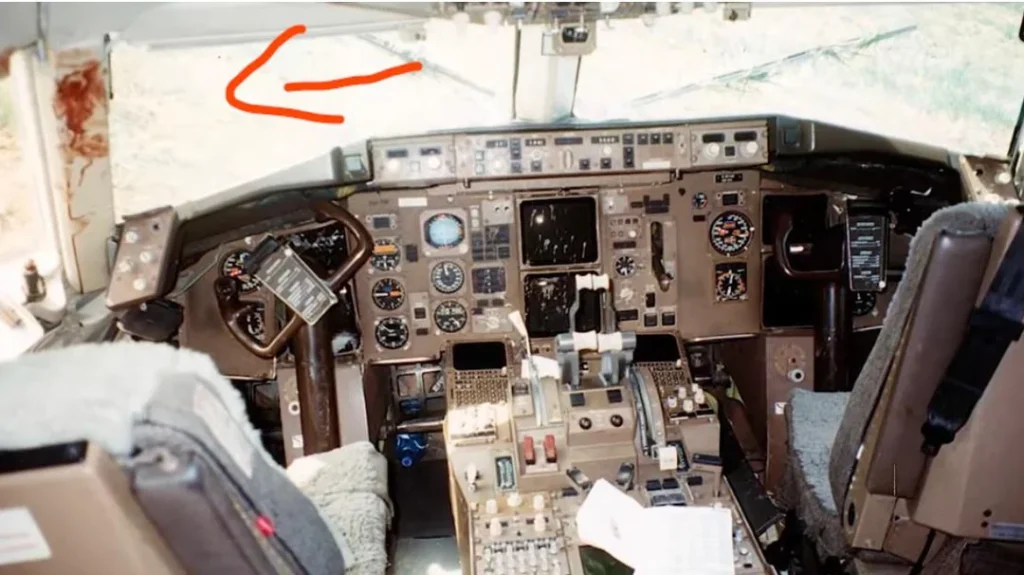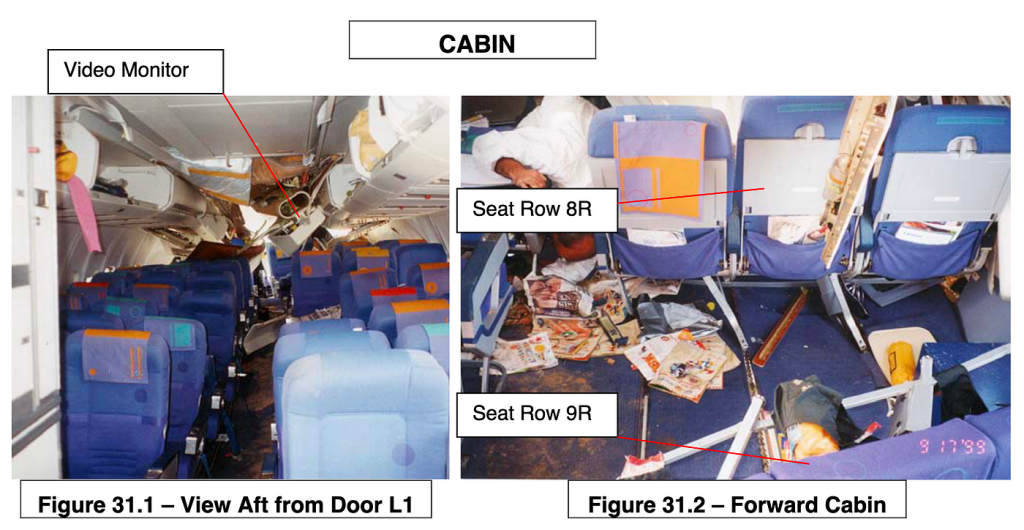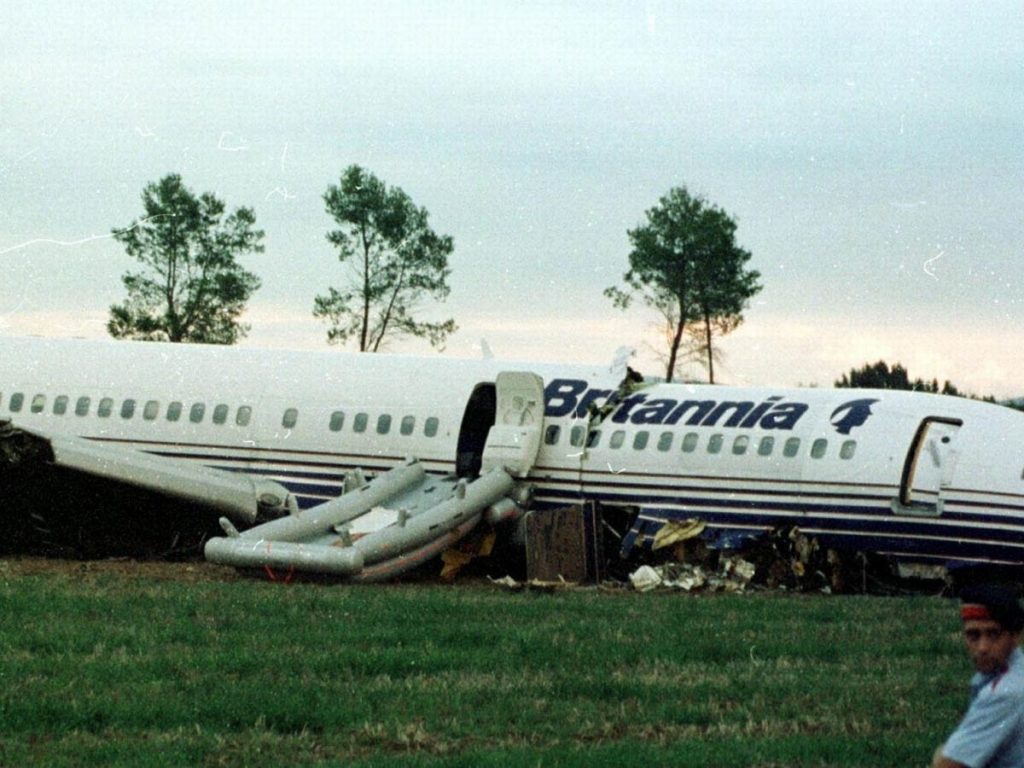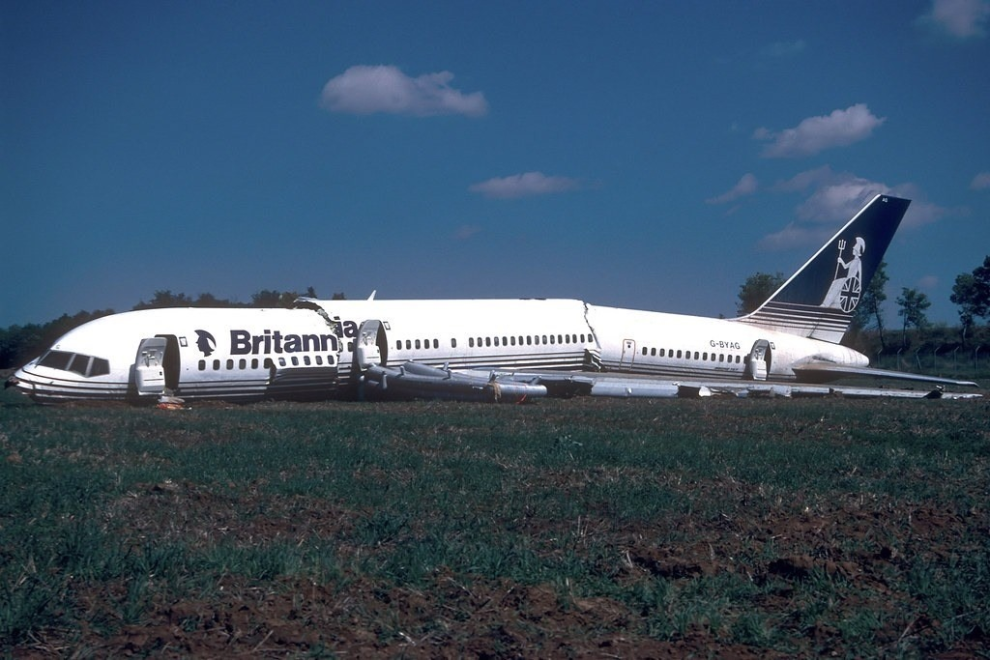IN the shadowy and tumultuous skies over Spain, a narrative of dread and extraordinary survival unfolded as Britannia Airways Flight 226A, making its journey from Cardiff Airport to Gerona-Costa Brava Airport, faced an ordeal that tested the resolve of those on board, leading to an outcome where the vast majority emerged unscathed. This episode, occurring 24 years prior, stands as a stark reminder of the fragility of life and the utmost importance of aviation safety.
The aircraft, a Boeing 757-204 bearing the registration G-BYAG, confronted adverse weather right from the start. Departing from Cardiff at 20:40 local time, neither the crew nor the passengers could have anticipated that their flight towards Gerona would test their endurance to such an extent. As they neared their destination, a looming thunderstorm set the stage for a challenging approach, culminating in a critical decision-making moment with lasting implications.
The narrative reaches its apex as the crew, navigating through darkness and torrential rain, chose a VOR/DME approach to runway 02, contending with a wet runway, downslope, and tailwind. A sudden alteration in wind direction necessitated a switch to an ILS approach to runway 20, placing the aircraft in peril. In the final moments before landing, a series of technical mishaps and human errors, compounded by the severe weather, led to a disastrous runway excursion.
The aircraft’s impact was catastrophic, leading to its destruction. Yet, in the wake of devastation, an extraordinary outcome was revealed: of the 236 passengers and nine crew members aboard, only two sustained serious injuries, while 41 incurred minor injuries. Tragically, one passenger later died due to undiagnosed internal injuries, casting a shadow over an otherwise miraculous tale of survival.



Subsequent inquiries unveiled multiple contributing factors to the accident, including the destabilisation of the approach, loss of external visual references, and an uncommanded increase in forward thrust. These revelations underscore the necessity for stringent flight crew training and thorough weather condition assessments, serving as crucial lessons for the future of aviation safety.
As we remember those who survived and ponder the events of that September night, the ordeal of Flight 226A is a testament to human resilience and the paramount importance of advancing aviation safety standards.
It serves as a poignant reminder of the slender margin between tragedy and miracle, and the indomitable spirit that prevails in the face of adversity.

















